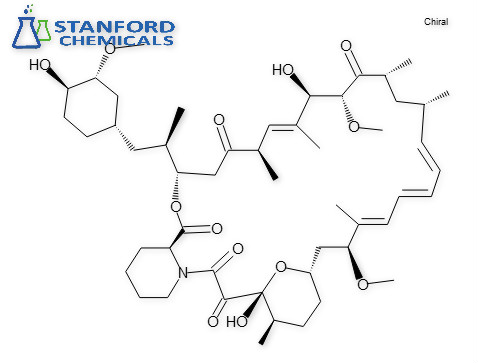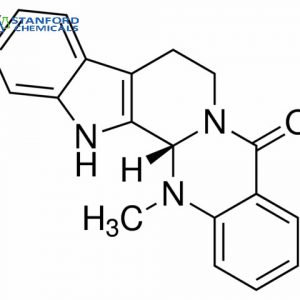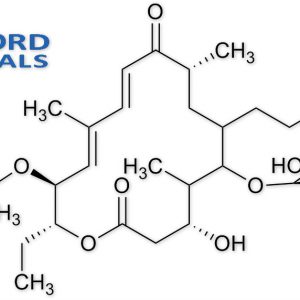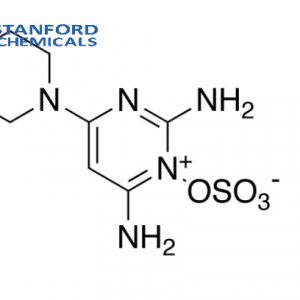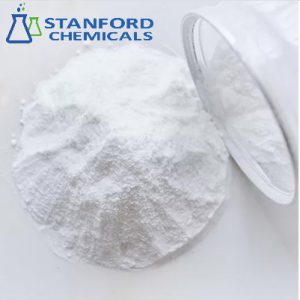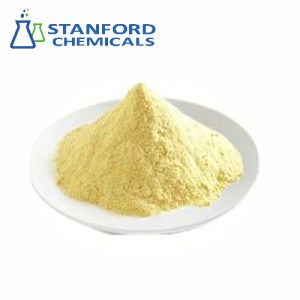- Home
- Pharmaceuticals
- 040-000-336 Rapamycin, CAS 53123-88-9
040-000-336 Rapamycin, CAS 53123-88-9
| Synonyms | Sirolimus, RAPA |
| Keywords | Immunosuppressor, anti-aging, cancer |
| Related products | Metformin (Hydrochloride), Acarbose, Dasatinib Monohydrate |
- Description
Description
Rapamycin Specifications
| Product Name | Rapamycin |
| CAS Registry Number | 53123-88-9 |
| Molecular Formula | C51H79NO13 |
| Molecular Weight | 914.17 g/mol |
| Appearance | White powder |
| Shelf life | 2 years |
| Functions | Induce autophagy, immunosuppressor, anti-aging |
Rapamycin Description
Rapamycin is a macrolide compound used to cover coronary stents, prevent organ transplant rejection, and treat a rare lung disease called lymphangioleiomyomatosis. It has an immunosuppressive function in the human body and is particularly useful in preventing kidney transplant rejection. Rapamycin was first evaluated as an antifungal agent but is now studied for its potent immunosuppressive and antiproliferative properties.
Rapamycin is used in clinical settings to prevent rejection in organ transplantation and to treat certain types of cancer.
Rapamycin – A Potential Anti-Aging Drug
Originally discovered as an antifungal agent, rapamycin has attracted much attention for its potential anti-aging properties. Many geriatricians consider it (or similar drugs) to be our best hope for pharmacologically slowing the aging process.
Rapamycin works by inhibiting mTOR. mTOR is a central regulator of cellular metabolism, growth, and survival. By inhibiting mTOR, rapamycin can modulate various cellular processes associated with senescence and age.
Animal Studies:
Studies in mice have shown that rapamycin can extend lifespan and delay the onset of age-related diseases. In a landmark study, rapamycin was found to extend the lifespan of middle-aged mice by 14% (females) and 9% (males).
Rapamycin Applications
- Laboratory research
- Used as pharmaceutical ingredients for anti-rejection therapy for kidney transplantation
- Used as an Immunosuppressant for Organ Transplantation
- Used to reduce cancer cell growth and proliferation
- Drug-eluting stents coated with rapamycin are used in coronary artery disease to keep arteries open and prevent restenosis after angioplasty
Reference:
- Kay JE, et al. Inhibition of T and B lymphocyte proliferation by rapamycin. Immunology 72: 544-549 (1991).
- Barbet NC, et al. TOR controls translation initiation and early G1 progression in yeast. Mol Biol Cell 7(1): 25-42 (1996).
- Guba M, et al. Rapamycin inhibits primary and metastatic tumor growth by antiangiogenesis: involvement of vascular endothelial growth factor. Nat Med 8(2): 128-135 (2002).
- Edwards SR, et al. The rapamycin-binding domain of the protein kinase mammalian target of rapamycin is a destabilizing domain. J Biol Chem 282(18): 13395-13401 (2007).
- Chen, L., Yang, Z.S., Zhou, Y.Z., Deng, Y., Jiang, P., Tan, S.L. (2020). Dihydromyricetin inhibits cell proliferation, migration, invasion and promotes apoptosis via regulating miR-21 in Human Cholangiocarcinoma Cells. Journal of Cancer, 11(19), 5689-5699. https://doi.org/10.7150/jca.45970.

